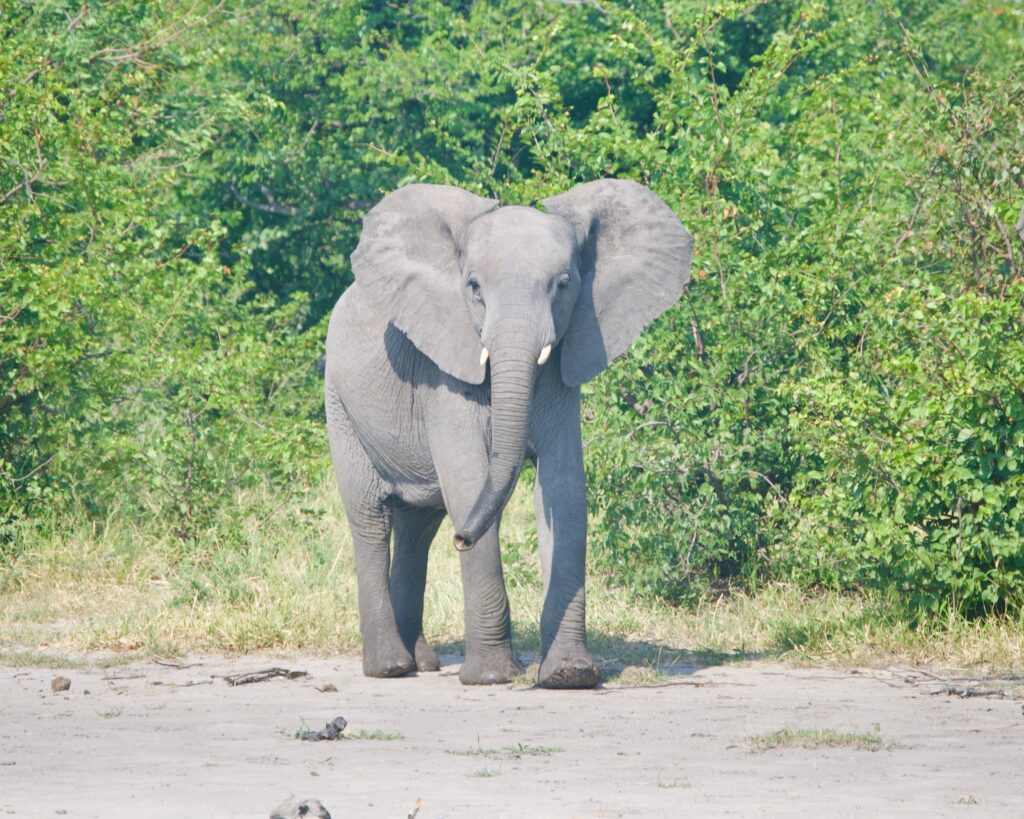By Marcy Bucheit of the University of Vermont
“The best things come from rides in a bumpy backseat.” I smile wryly as I write this phrase into my field journal, since, at that moment, the bumpy backseat was making it very difficult for me to write. If you were to peek into my field notes, you would be able to clearly see when I was attempting to jot observations and ideas down while we were actively in route – my normally precise and neat handwriting transforms into a half legible scribble with jagged pen lines leading away from words indicating where we hit an especially deep rut. However, difficulty of writing aside, I wouldn’t want it any other way. The hot and cramped backseat of our vehicles, with three of us students jostling each other and apologizing for the occasional elbow to the ribs, has been the vehicle to some of the most awe-inspiring experiences of my life. Without that backseat, I wouldn’t be coming to understand this ecosystem and this place in the intimate way I feel I am.
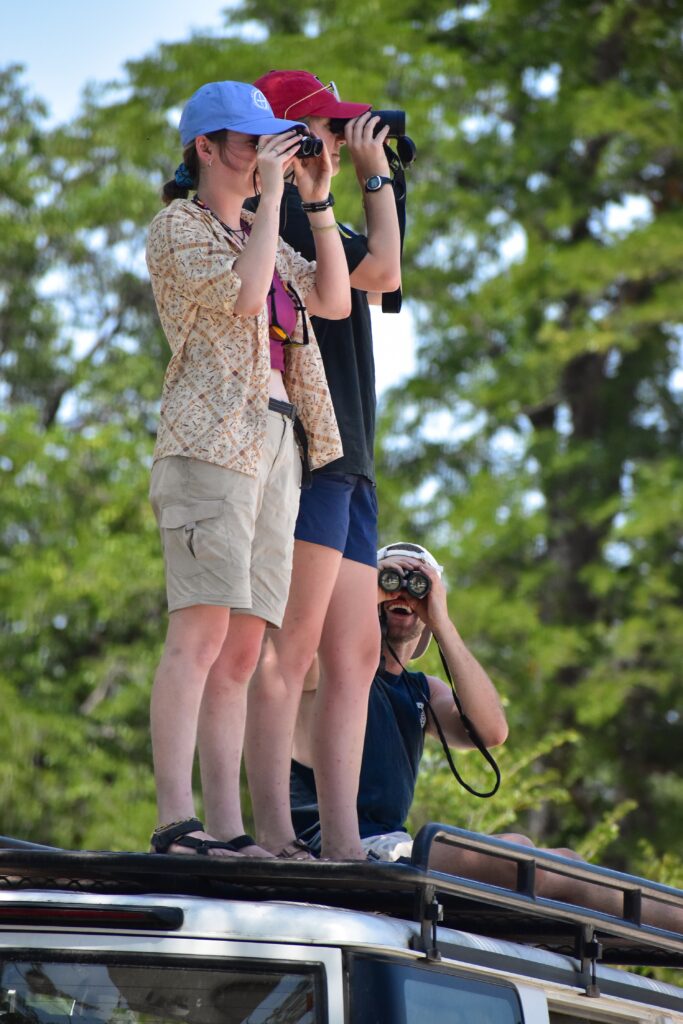
We have three trusty cars in our fleet – Mowana (meaning baobab tree), Lucy, and Monna (meaning dude). Sturdy Land Cruisers and a Toyota Hilux, they take the beatings of the bush well. Some days we drive transects on “roads” which generally are tight one lane tracks of sand or mud. Otherwise, we have to bushwhack, subjecting the cars to the scraping of trees, stumps, and deep ruts. Most recently, they powered us through potholes filled with waist deep water and slippery mud, the result of five consecutive days of rain which, in lesser cars, would have made the roads impassable. Sure, they have their quirks – Lucy is often reluctant to start on the first turn of the key, Mowana has a slightly questionable interior odor, and Monna gets a bad reputation for being an automatic. However, the many hours we’ve already spent in their backseats have brought us to love them. Each backseat tells a story… the field guides tucked into seatback pockets, the crumbs of Bakers sandwich cookies and odd raisins on the floor, and picked grasses and wildflowers stashed under the front seats. We’ve bonded in the backseat, forging friendships through group sing-alongs, quizzing each other on Latin names of species, and heated discussions on what dog/Hogwarts house/color/ bird/comic character you would be.
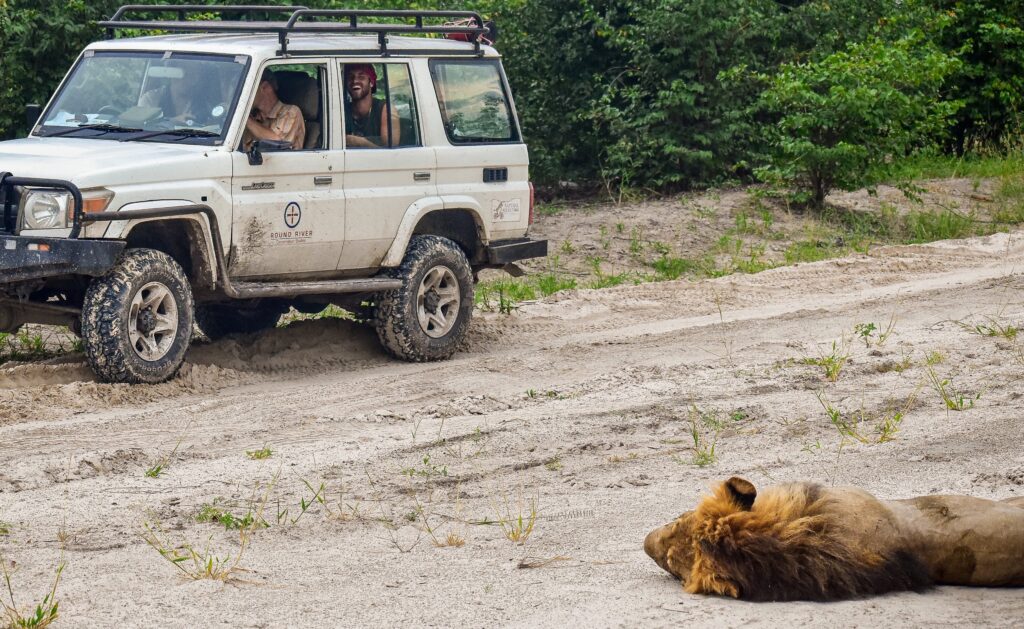
For an experience steeped in nature and a lack of modern technology, I’ve been thinking about vehicles, especially ours, a surprising amount. When we go into the field, we have very few of the usual powered appliances and tools we normally use in day-to-day life – with the exception of our cars. Driving through the bush is arguably our greatest intrusion into the environment when we embark on game drives or research transects. To this end, my research project partner Guido and I decided to continue the research of past program students in investigating the impact that vehicle presence has on elephant behavior in relation to their demographics. Thus far, this line of inquiry has yielded interesting observational results. Elephants tend to view a vehicle as a new inanimate object in their environment and they often posture dominantly at the foreign intruder, letting them know that they’re bigger and badder than it. While slightly intimidating at times, it’s fascinating to watch elephants do this. They hold their ears open, spreading them wide to look larger and throw their head violently side to side, causing their ears and trunk to snap. Satisfied after their big demonstration, they’ll usually amble off and return to grazing.
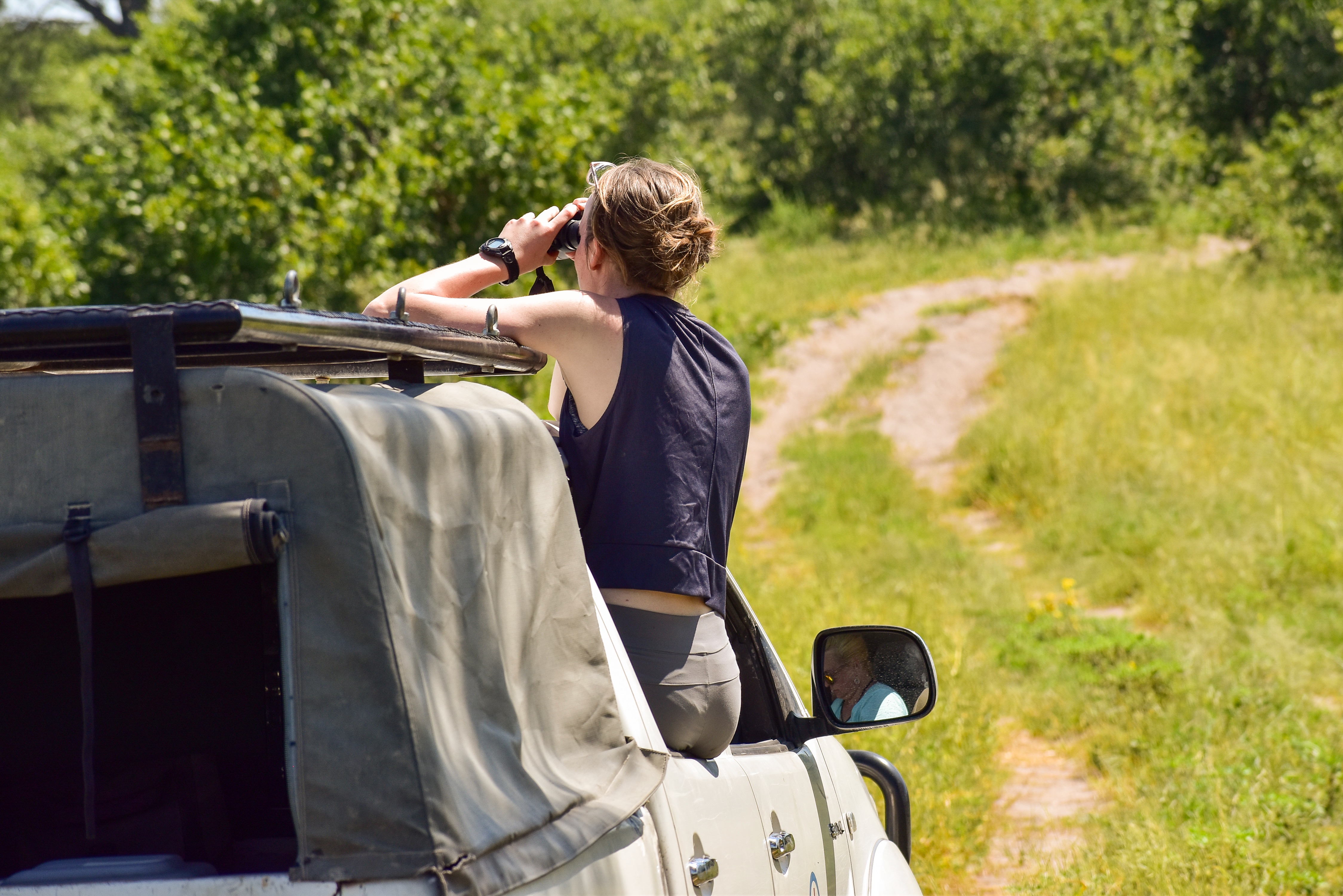
The lions we’ve encountered have shown even less interest in the white, rumbling box approaching and stopping near them. In our group’s first lion encounter, we came upon a large male lazing in the road. He barely lifted his head when we arrived, fixing his penetrating amber eyes on us as we parked mere meters away, quickly deciding to simply return to napping. After we observed him snoozing for over an hour, he sat up and began to roar. To hear a lion roar in such close proximity is to feel the most primal part of your nature quake in understanding the power of the predator in front of you. They push out a deep, resounding guttural call from the furthest reaches of their diaphragm, creating a sound that reverberates the air around you and makes every hair stand on end as the vibration seeps into your bones. Shortly after beginning to roar, the lion then proceeded to peel himself from his comfortable sand bed and, continuing to roar, began to approach the car that three other students and I were observing from. Not a single shutter click or pen scratch could be heard as, photos and field notes forgotten, we all held our breath in awe and terror as this magnificent creature casually padded towards us. Guido, in the front seat, grappled with the car door in a futile attempt to roll up the window as Josh in the backseat, closest to the window and the lion, leaned further and further towards Emma and I, trying to be slightly further from the hulk of a cat coming nearer. The lion, easily the least concerned member of this moment, stopped, sniffed, and satisfied with his appraisal of the annoying obstacle in his path, walked behind the car and continued down the road. The collective exhalation of air in our car was violently audible, giving way to increasingly high-pitched giggles as the amazement and fear of those few seconds washed over us. In that moment, we were grateful to have Lucy who both allowed us to approach a lion so closely in the first place and protected us from any further interest on the lion’s part.
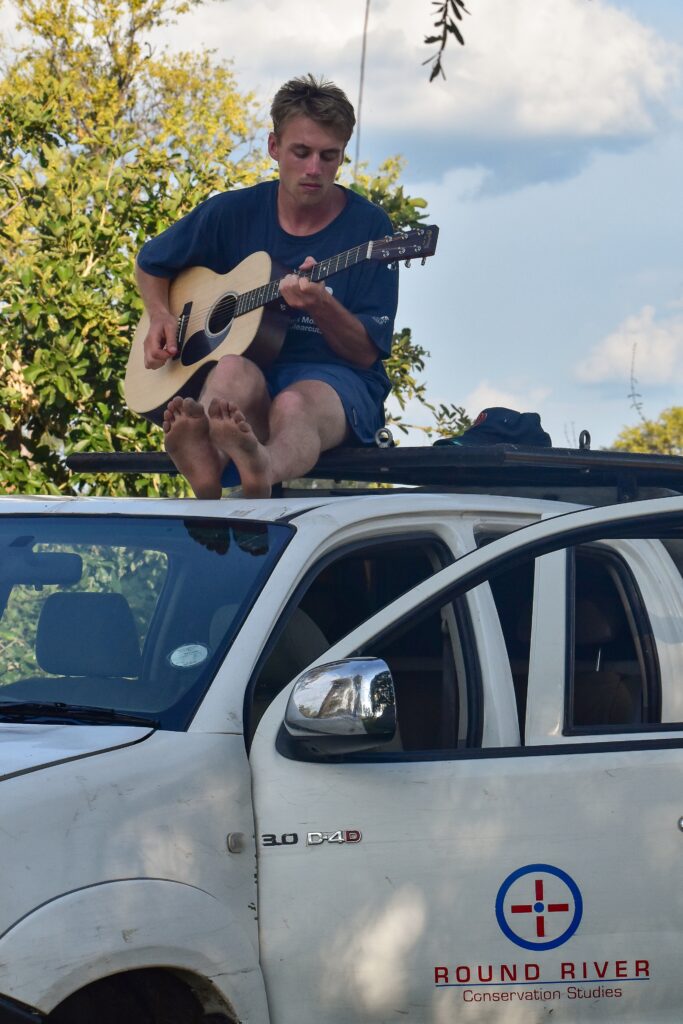
In some ways, it may seem counterintuitive to our research and conservation work that one of our most vital pieces of equipment is diesel powered with all the negative environmental impacts that come from these machines. I am hopeful, to that end, that we will be doing this work out of less impactful vehicles in the near future. I am also hopeful that, through research like Guido and mine, we can come to a better understanding of how our vehicular presence in the bush impacts animal behavior and stress, ideally leading to improved wildlife viewing practices and lowering the risk to animals and cars. However, for now, we are grateful every morning, despite the 5 a.m. wakeup, to climb into those backseats, knowing that a bumpy morning ride will bring us to closer friendships, greater knowledge, and a deeper appreciation of the Delta we are striving to become a part of.
